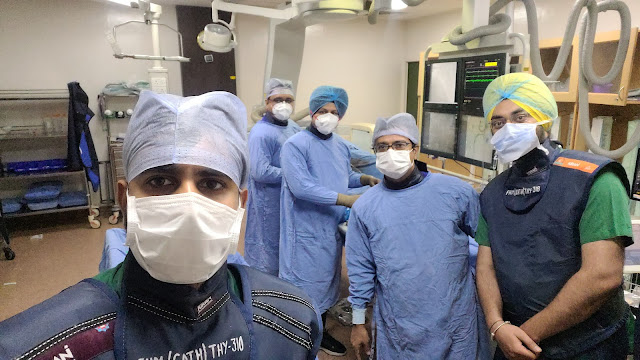SMA Stenting
Fluid resuscitation, total parenteral nutrition, placement of a nasoenteric tube past the obstruction for enteric feedings, tiny meals, and positional eating are among the medical treatments for SMA syndrome.
What is a mesenteric angiography and how is it performed?
An artery is pierced with a needle. A catheter is a tiny flexible tube that is passed through the needle. It is threaded into the artery and then up through the main vessels of the abdomen until it reaches a mesenteric artery. X-rays are used as guidance by the doctor.
How can you know if you have mesenteric ischemia?
Ø Angiography. A long, thin tube called a catheter is placed into a groyne artery for this examination.
Ø CT angiography is a type of angiography that uses a computer This test is comparable to angiography, except it uses 3-D images that are led by a computer rather than angiography.
Ø MR angiography is a type of angiography that uses magnetic resonance imaging to
Ø Ultrasound with Doppler.
Ø Tests on the blood.
The angle between the AA and the SMA can be measured via CT angiography or MRI. The usual angle is 25–60 degrees, but it is lowered to 7–22 degrees in people with SMA syndrome.
CT is a radiographic characteristic
The SMA is frequently enlarged on non-contrast CT. In acute cases, postcontrast pictures frequently reveal a vascular flap. Increased attenuation of the fat plane around the SMA can also occur in an acute situation.
Prognosis and treatment
There are a variety of treatment options available, including conservative care, surgical revascularization, and endovascular therapy 8. The prognosis varies, and it might be fatal in some cases.
Stents are divided into two types: bare-metal stents and drug-eluting stents. The latter is more commonly utilized and is coated with drugs to help keep a blocked artery open for longer.
For the Acute Stroke Mechanical Thrombectomy, Dr. Sandeep Sharma is the best radiologist to consult. He is an expert in both suction retrieval and stent retrieval and uses both techniques in perfect combination




Comments
Post a Comment